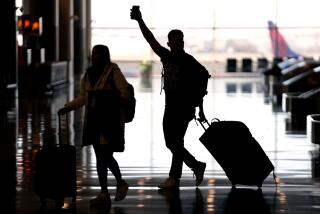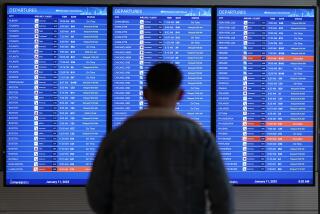Percentage of Air Crashes Tied to Human Error Is Up
- Share via
DALLAS — The percentage of commercial airplane crashes caused by human error has increased to 70%--not because of pilot carelessness but because of advances in technology, according to a published report.
Jim Burnett, chairman of the National Transportation Safety Board, told the Dallas Morning News in a copyrighted story that technological improvements have made flying much safer, but human error remains “one of the last frontiers in aviation safety.”
“What’s happening is not that human error is on the rise, but the percentage is on the rise,” Burnett said.
The NTSB determined that errors by the pilot or other members of the flight crew contributed to more than 71% of the 76 major airline crashes from 1967 to 1981, the News said.
In a survey of NTSB records on 25 commercial airplane crashes, the News found that the most common human errors cited include the breakdown of teamwork in the cockpit; overreliance on technology; dependence on untimely or inadequate information, and decisions to take off or land in dangerous weather.
For example, the NTSB blamed the flight crew’s decision not to use engine de-icers for contributing to the Jan. 13, 1982, crash of Air Florida Flight 90, which plunged into the Potomac River in Washington, killing 78. Investigators reported that a co-pilot told the pilot four times that something was “not right” but did not explicitly advise him to abort. Investigators said that lack of explicit communication contributed to the crash.
Before recent technological advancements, mechanical failure accounted for most airplane accidents, the report said.
More to Read
Inside the business of entertainment
The Wide Shot brings you news, analysis and insights on everything from streaming wars to production — and what it all means for the future.
You may occasionally receive promotional content from the Los Angeles Times.










